Soft-Bait Secrets
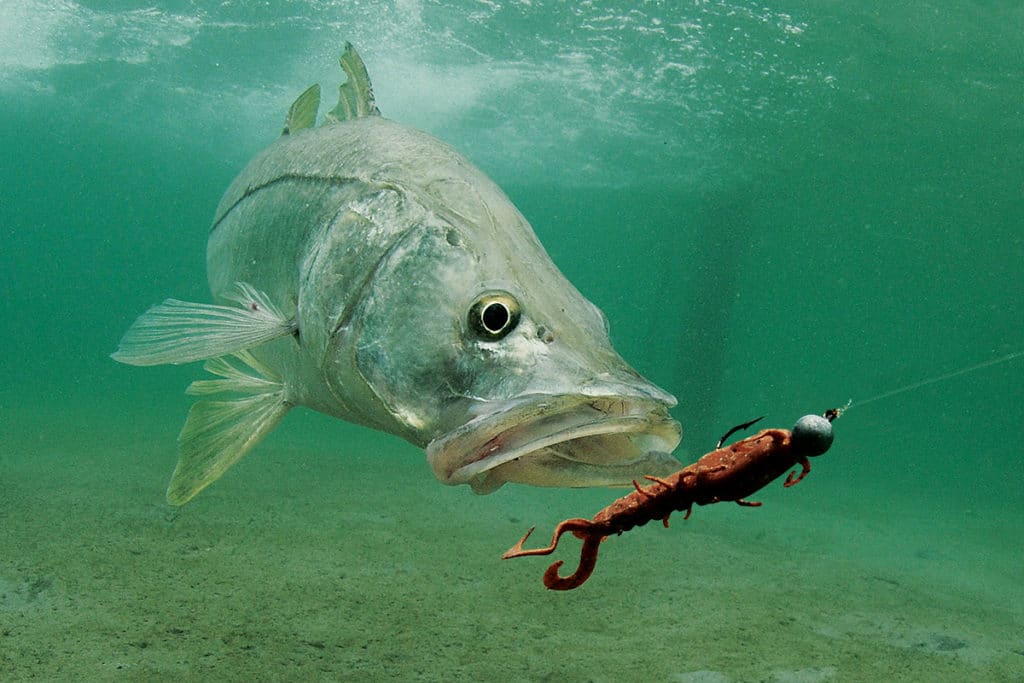
Time to break those old habits. I’ll be the first one to admit I have some when it comes to fishing with soft baits. Often those habits take shape after successful trips. I think, “Heck yeah, I’ve got these fish figured out!” Then, on the next couple of trips, I’ll get skunked.
Techniques for fishing with soft baits shouldn’t remain static. The same old baits can stagnate in their effectiveness. Take advantage of better fish-catching opportunities by using different styles of fishing, trying new lures and techniques, or even considering a wider range of target species. Pick up some new habits.
Freshwater Finesse
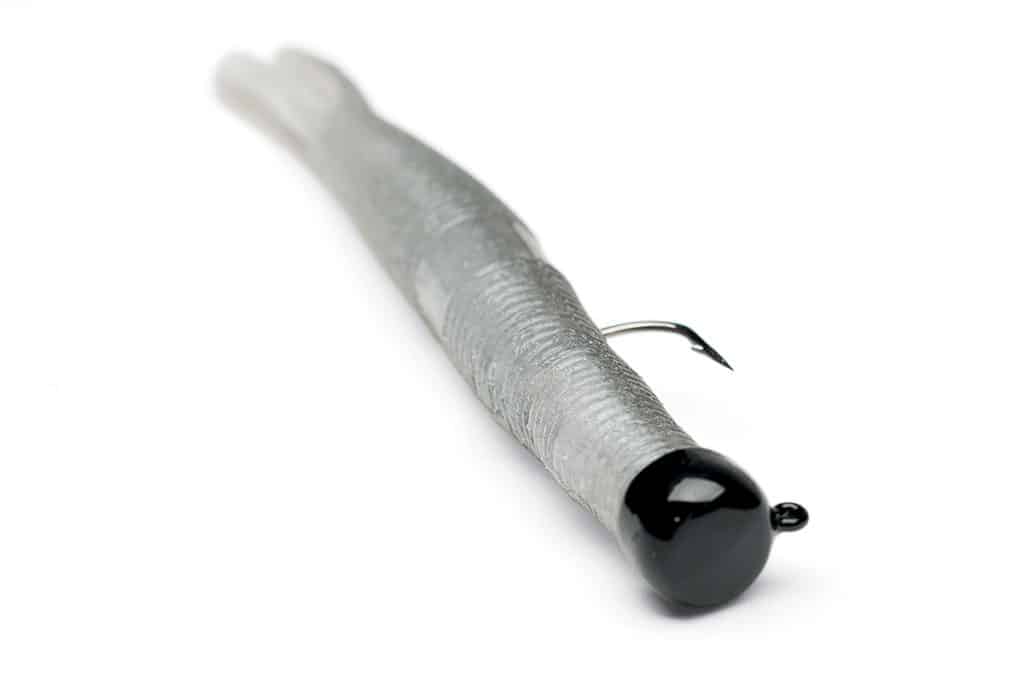
Daniel Nussbaum, president of Z-Man Fishing, learned the costly consequences of sticking to the same presentations, especially during slow fishing periods.
“I was fishing in South Carolina with Drew Reese,” says Nussbaum. Reese is the former tournament bass angler who finished seventh at the inaugural Bassmaster Classic. “Reese caught eight quality seatrout in a row from the back of the boat, while I failed to get a bite on my three staple trout baits.”
Reese had chosen a finesse rig, also known as a Ned rig, similar to the style of bait he uses in summer for smallmouths at Lake of the Woods, Ontario. The rig consists of a ⅙-ounce Finesse ShroomZ jig head and Hula StickZ (a buoyant creature bait with rear tentacles). Nussbaum stuck with his lead-head Trout Eye jig head and ElaZtech soft bodies that imitate baitfish.
“At the next few stops, we quietly poled and drifted across several flats in search of schools of redfish, and Reese proceeded to boat several quality redfish while I struck out again,” Nussbaum says. “Reese expertly played the fish on his light gear with 6-pound Fireline, 10-pound fluorocarbon leader and light-wire hooks. He was putting on a clinic using Midwest finesse tackle and tactics.”
Nussbaum realized why the bass master’s baits and presentation were so effective. “Reese slowly raised his rod three times before allowing the presentation to settle to the bottom,” he says. “He always allowed the bait to reach the bottom at least once on each retrieve, noting that the bait standing up off the bottom and moving slightly mimics a small minnow dying or feeding.”
Hard or Soft
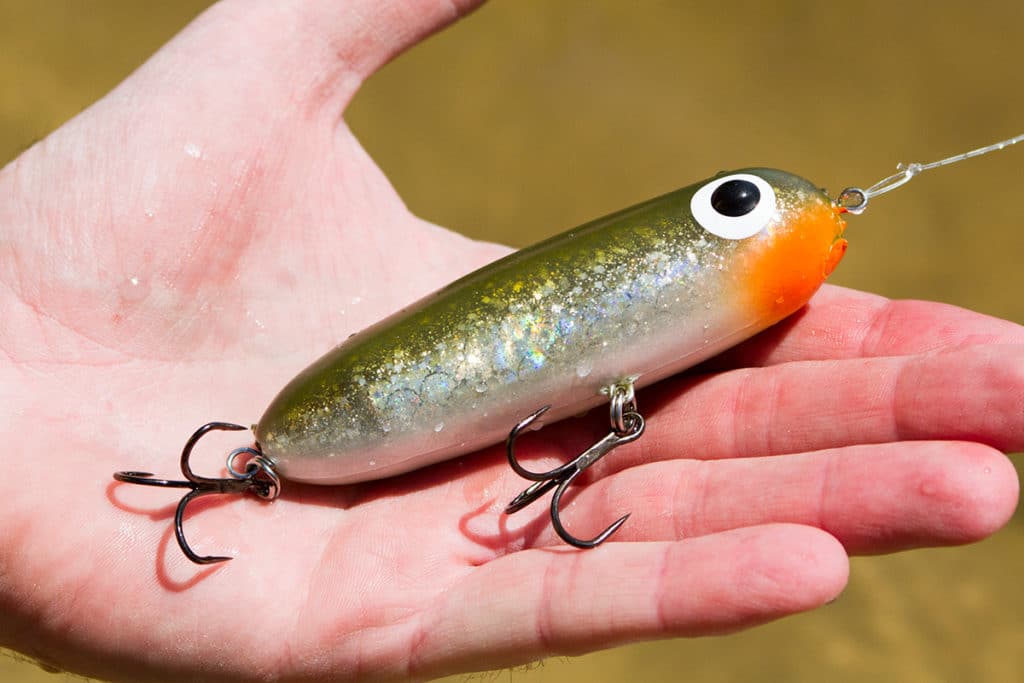
A growing number of soft-plastic baits now come rigged with trebles, taking up real estate once reserved only for hard baits. Break the mindset that only hard baits can be twitchbaits or topwaters. The most established soft-bait brand to produce twitchbaits with trebles might be the one with Paul Brown’s namesake, now produced by MirrOlure. Some Gulf Coast anglers recognize them as Corkys.
“I think predators hang on to them for a bit longer due to the fact that they’re soft and more realistic in feel,” says Capt. Tommy Thompson, executive director of the Florida Outdoor Writers Association. “We use them only in colder weather, when big seatrout are moving slowly and want slow-moving prey that’s easy to catch.”
The Paul Brown line of baits recently introduced topwater models to complement its suspending twitchbaits. Thompson favors the Devil twitchbait model, with a built-in wire harness, single treble hook, oversize eye and short “rat tail” at the rear.
“Use a very slow retrieve, just keeping the plug off the bottom. A random twitch will cause the plug to die, and that’s when predators like trout and reds are more likely to attack,” says Thompson. “I’ve caught 60 trout on one, but it takes just a single bluefish to cut one in half. A 2500-class reel on an 8-foot rod with 10-pound PowerPro works just fine for these plugs.”
Go Weedless All Day Long
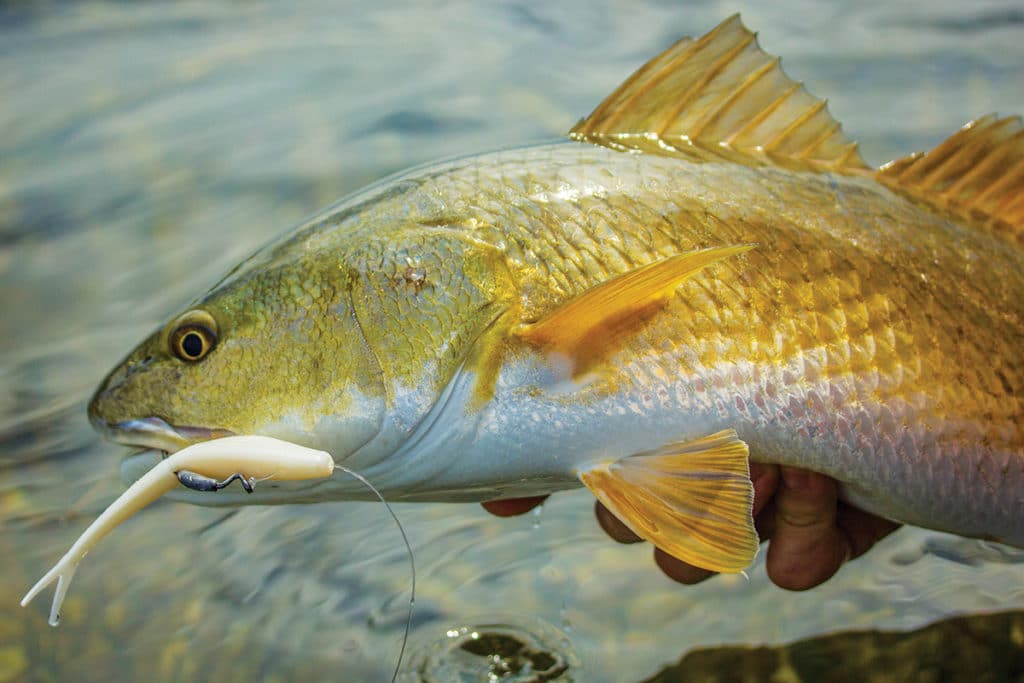
Fishing with weedless soft baits is and always has been a productive technique in estuaries, creeks and other inshore waters. But for many, the jerkbait is just a single tool in the box when fishing in shallow waters.
I propose that the jerkbait become your prized tool, like a hammer that’s used regularly in around-the-house projects. Make sure there’s always a rod rigged with a jerkbait and worm hook whenever you’re fishing shallow waters less than three feet deep.
“If you retrieve the jerkbaits fast, you can skim them on top for surface strikes,” says Adrian Gray, fishing photographer and creative director at the International Game Fish Association. “If you fish them slower, they suspend if not heavily weighted. Plus, they land softer than most hard-body lures and spook fewer fish.”
The inshore scenarios where weedless baits excel illustrate their versatility. You can cast them under mangrove overhangs or docks, on top of oyster beds or grass beds, or even along rock jetties or shore breaks.
“I find that if I have someone fishing with me with little experience casting to shorelines or structure, a weedless jerkbait affords the angler more confidence to cast closer to structure with less risk of snags,” says Gray. “Plus, worm hooks are far easier to unhook and better for releasing fish than a mouth full of trebles.”
Creatures and Colors
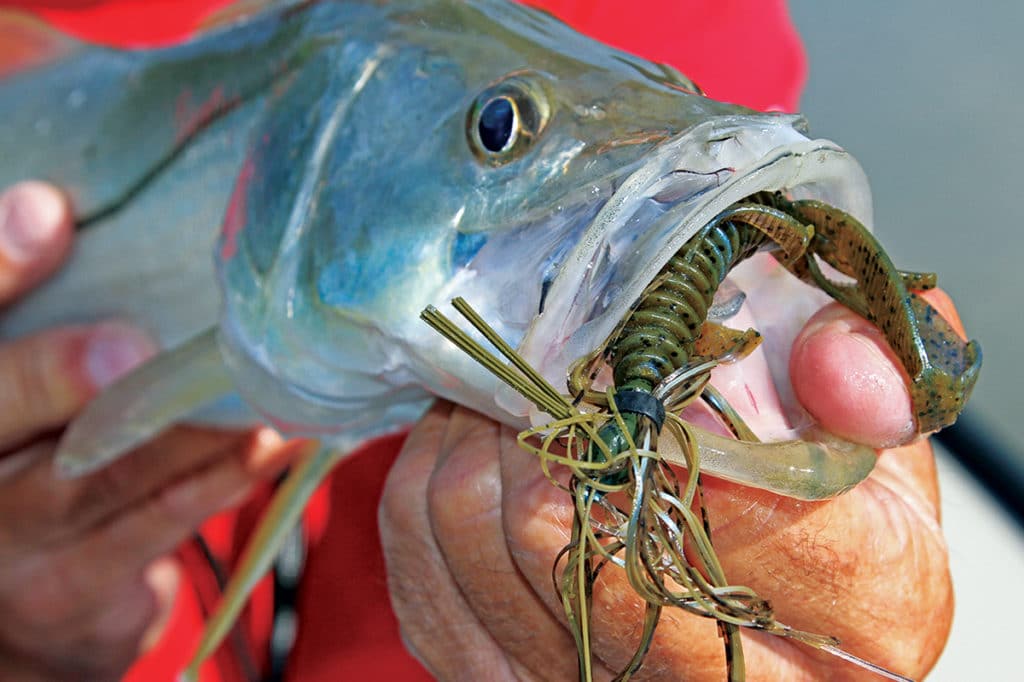
Picking the right soft plastic sometimes defies conventional logic. If fish attacked only the most natural-looking presentations, all soft baits would come from the same baitfish molds, utilize the same natural colors, and replicate one another. But colors such as LSU’s purple and yellow are popular in places like Louisiana. And at times, the bait that’s shaped like a french fry can out-fish the mullet imitation.
“It’s all determined by our dirty marsh waters,” says Capt. Dan Skermetta of Venice, Louisiana. “Those darker colors show up so much better than light, natural colors.”
Creature baits that mimic crabs, eels and animals that I have never seen on this green earth also generate a profile that’s easier to pick up in murky waters. Often the baits are rigged with a noisy popping cork 2 to 3 feet above the bait.
Anglers who fish tidal zones where fresh meets salt have the opportunity to catch both largemouth bass and redfish at the same spot. Flip a jig-and-pig at reedy shorelines for both species.
In the Florida Everglades, Capt. Ray Van Horn pitches mangroves for snook, reds, black drum, young goliath grouper and tarpon with Strike King’s Hack Attack bass jig coupled with a Strike King Rage Bug (creature bait) or MirrOlure Marsh Minnow (baitfish) trailer.
“It truly is a reaction strike [I’m looking for] when flipping to mangroves and undercut banks,” says Van Horn. “I use a 7½-foot medium-heavy casting rod with backbone and large guides to handle the GT knot I tie between my 70-pound braid and 80-pound leader. When fish bite, they hit it with authority and don’t let go.”
Target New Species
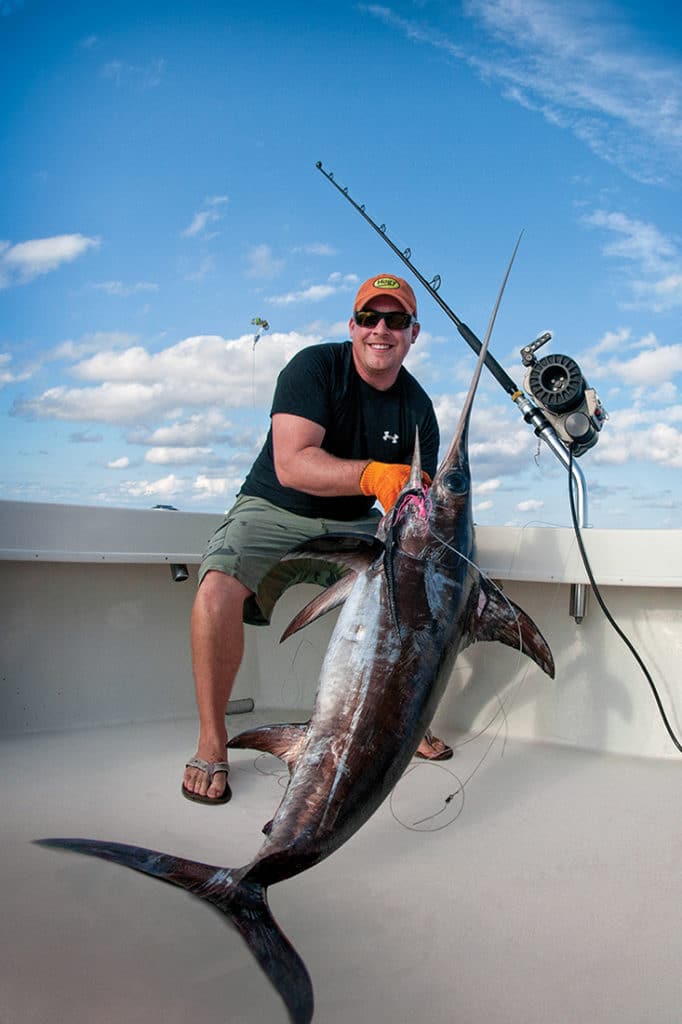
The dirty secret that experienced deep-droppers only recently revealed is that eels are top natural baits for swordfish. Capt. Corey Burlew, a commercial fisherman from Deerfield Beach, Florida, found that soft-plastic eel imitations are just as productive.
“The first day I ever tried the 18-inch Hogy eel, I had five bites and two swords landed,” says Burlew. “The next day I had five bites and landed three fish. Ever since, I’ve used them with confidence.”
Curlew uses traditional electric gear for the swordfish, but at the terminal end he adds a pink or black skirt to 300-pound mono leader before rigging the soft-plastic eel to two 8/0 Southern-style tuna hooks. He sews the Hogy to the hooks the same way he would sew a mackerel.
“What gives action to the eel when fished deep is the current at the surface,” he explains. “I’ll head up-current, say, into 3-knot current at just 2 knots, so the boat drifts slowly back, and that imparts action to the eel at the bottom.”
So far, Curlew has landed up to four swordfish on a single soft plastic, but averages closer to two or three fish per bait. “I’ve tried marinating the Hogy in menhaden oil,” he says, “but I haven’t noticed much of a difference in my catch rate between the scented and unscented baits.”








